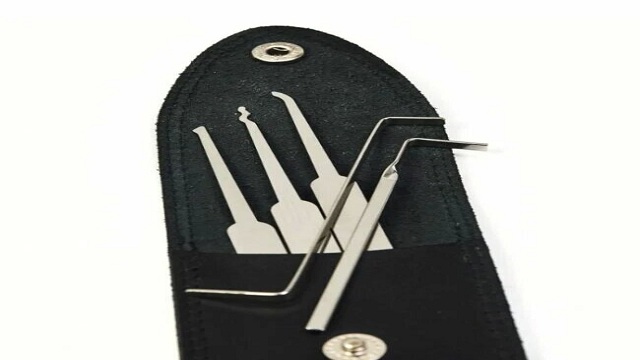The Evolution of Locksmith Tools: From Traditional to High-Tech Solutions
2024-07-10 09:12

The locksmith profession, with roots tracing back thousands of years, has always been at the forefront of security innovation. From rudimentary mechanisms to sophisticated electronic systems, the evolution of locksmith tools is a testament to humanity's ongoing quest for safety and efficiency. This article explores the history and development of locksmith tools, highlighting technological advancements and how modern tools enhance efficiency and security.
Ancient Beginnings
The earliest known locks date back to ancient Egypt around 4,000 years ago. These were large, wooden devices with a simple pin-tumbler mechanism. The keys, made of wood, were bulky and rudimentary. Despite their simplicity, these locks provided a basic level of security against theft.
The Romans later improved upon this design, creating smaller, more intricate metal locks. They introduced the warded lock, which used obstructions (wards) to prevent the lock from opening without the correct key. Roman locksmiths also crafted more sophisticated keys, often made from bronze or iron, showcasing early attempts at enhancing security through design.
The Middle Ages: Craftsmanship and Innovation
During the Middle Ages, locksmithing became a respected craft. Locksmiths were skilled artisans who designed locks with intricate mechanisms and decorative elements. This period saw the introduction of the lever tumbler lock, which used levers to prevent the bolt from moving unless the correct key was inserted. This innovation significantly improved the security of locks.
In addition to mechanical advancements, locksmiths began to understand the importance of key control. Keys were often unique and handcrafted, making unauthorized duplication difficult. This period laid the groundwork for more secure locking mechanisms and the specialization of locksmith tools.
The Industrial Revolution: Mass Production and Standardization
The Industrial Revolution brought significant changes to the locksmithing industry. The ability to mass-produce locks and keys standardized the production process, making locks more affordable and widely available. Linus Yale Sr. and Linus Yale Jr. were pivotal figures during this time. Linus Yale Jr. invented the modern pin-tumbler lock in 1861, a design that remains prevalent today.
Yale's lock used a series of pins of varying lengths to prevent the lock from opening without the correct key. This innovation made locks more secure and difficult to pick. Alongside these advancements, specialized tools for locksmiths began to emerge. Key cutting machines, pinning kits, and lock pick sets became essential equipment for professionals, enhancing their ability to work efficiently.
The 20th Century: Mechanization and Complexity
The 20th century saw the rise of more complex locking mechanisms and the introduction of combination locks and electronic locks. Combination locks, popularized by companies like Master Lock, used a rotating dial to align internal components and release the locking mechanism. These locks eliminated the need for keys, reducing the risk of unauthorized access through key duplication.
Electronic locks further revolutionized the industry. Early electronic locks used simple keypad systems, but advancements in technology led to more sophisticated systems incorporating card readers, biometric scanners, and wireless connectivity. These modern locks required a new set of tools for installation and maintenance, pushing locksmiths to adapt to an increasingly digital landscape.
The Digital Age: Smart Locks and High-Tech Solutions
In the 21st century, the advent of smart technology has transformed the locksmithing industry. Smart locks, which can be controlled remotely via smartphones and integrated with home automation systems, offer unprecedented convenience and security. These locks often use Bluetooth, Wi-Fi, or Zigbee technology to communicate with other devices, allowing users to monitor and control access to their properties in real-time.
The tools required for modern locksmithing have evolved accordingly. Traditional lock pick sets are now complemented by digital diagnostic tools, programming devices for electronic locks, and software for managing smart lock systems. Locksmiths must stay abreast of technological advancements, often undergoing specialized training to handle the latest security solutions.
Enhancing Efficiency and Security
Modern locksmith tools enhance efficiency and security in several ways. Key duplication machines have become more precise, reducing errors and ensuring a perfect fit. Electronic key cutters, capable of duplicating complex keys quickly and accurately, save time and improve service quality.
Digital diagnostic tools enable locksmiths to troubleshoot electronic and smart locks efficiently. These devices can identify faults, program new keys or access codes, and update firmware, ensuring that locks operate smoothly and securely. Additionally, locksmiths now use advanced software to manage access control systems, providing clients with comprehensive security solutions.
Conclusion
The evolution of locksmith tools from traditional wooden mechanisms to high-tech digital solutions reflects broader technological advancements and the growing complexity of security needs. Each era has brought innovations that have improved the efficiency and effectiveness of locksmithing. As technology continues to advance, locksmiths will remain crucial in developing and implementing security solutions, ensuring that our homes and businesses remain safe and secure.

 Like Us on Facebook to enjoy 5% discount
Like Us on Facebook to enjoy 5% discount